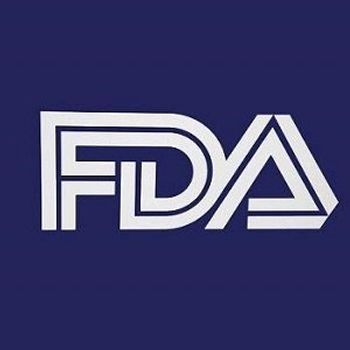
Mesenchymal Stem Cell Approach Meets End Points in Placebo-Controlled Trial for Parkinson Disease
Key Takeaways
- Three infusions of allo-hMSCs significantly improved motor function in Parkinson disease patients compared with placebo.
- A notable placebo effect was observed, complicating the interpretation of the trial's results.
A recent trial shows that 3 infusions of stem cells significantly enhance motor function in Parkinson patients, highlighting the need for further research.
A recently published phase 2, randomized, placebo-controlled trial demonstrated that 3 infusions of 10 × 10⁶ allogeneic human mesenchymal stem cells (allo-hMSCs) significantly improved motor function in patients with mild to moderate Parkinson disease (PD). Additional clinical trials are needed to ensure consistency and reliability of allo-hMSC batches, as investigators observed a profound improvement in the placebo group and a less robust improvement in the 2-infusion group.1
Conducted between November 2020 and July 2023, the study comprised 45 patients with PD who received either 3 allo-hMSC infusions (n = 16), 1 placebo followed by 2 allo-hMSC infusions (n = 14), or 3 placebo infusions at 18-week intervals (n = 15). Over an 88-week follow-up, the primary outcome assessed was achieving at least a 70% posterior probability (PP) of a difference in the proportion of patients with an improvement of 5 points or more in OFF-medication MDS-UPDRS Part III scores at week 62.
Led by Mya C. Schiess, MD, a neurologist at UTHealth Houston Neurosciences Neurology, Texas Medical Center, a greater proportion of patients in the 3-infusion group achieved at least a 5-point improvement in MDS-UPDRS III compared with placebo at week 62 (mean difference [MD], 5.0%; 95% credible Bayesian interval [CrI], –2.3% to 24.8%; PP = 93.7%). Using a more stringent threshold of at least 11 points, the results remained consistent, with more patients in the 3-infusion group improving relative to placebo (MD, 13.3%; 95% CrI, –6.1% to 37.8%; PP = 91.5%).
At week 62, fewer patients in the 2-infusion group met the primary end point (MD, –62.4%; 95% CrI, –85.5% to –32.1%; PP ≥99.9%) as well as the more stringent threshold (MD, –63.8%; 95% CrI, –86.0% to –32.5%; PP≥99.9%). Additional data from this time point revealed a –16.9-point (–19.5% to –14.2%) improvement in the 3-infusion group, –3.9-point (95% CrI, –6.9% to –1.1%) improvement in the 2-infusion group, and a –14.6-point (95% CrI, –17.5% to –11.6%) improvement in the placebo group. Overall, the 3-infusion group differed from placebo by −2.3 points (95% CrI, −6.1 to 1.6; PP = 87.8%), while the 2-infusion group showed a +20.6-point difference (95% CrI, −37.6 to 24.5; PP ≥99.9%).
Regarding the high improvement in placebo scores, the study authors wrote, "Although this finding may seem counterintuitive, it is important to note that studies on PD progression suggest an average annual motor decline (increase) of approximately 2.4 points in MDS-UPDRS-III scores. Yet in this trial, all treatment groups showed improvement in their motor scores over the 88 weeks of participation; an outcome that may, in part, reflect a placebo effect."
They added that the residual placebo effect may have influenced the results because the primary outcome was assessed at week 62, 26 weeks, or approximately 6 months after the last infusion. By week 88, and with a more stringent threshold (≥11-point improvement in MDS-UPDRS-III), the differences between the 3-infusion and placebo groups widened (–3.3 points; 95% CrI, –7.3% to 0.7%; PP = 94.7%), supportive of a waning placebo response. For context, the 2-infusion group remained worse than placebo by +9.0 points (95% CrI, 4.8% to 13.0%; PP ≥99.9%) by week 88.
Compared with placebo, more participants in the 3-infusion group achieved at least a 12-point improvement in MDS-UPDRS at week 62 (MD, 22.0%; 95% CrI, –21.0% to 49.4%; PP = 96.3%) and week 88 (MD, 48.4%; 95% CrI, 23.9% to 74.0%; PP ≥99.9%). In line with other data, fewer participants in the 2-infusion group showed improvement relative to placebo at week 62 (MD, –43.0; 95% CrI, –71.2% to –8.3%; PP = 99.1%) and at week 88 (MD, –20.8; 95% CrI, –53.1% to 14.1%; PP = 87.8%).
In terms of safety, 10 mild and transient treatment-emergent adverse events were reported, with no severe events. In the 3-infusion group, single cases of malaise, transient hypertension not requiring medication, and vomiting occurred, while the 2-infusion group experienced only constitutional symptoms (fatigue, flu-like symptoms, headache), all of which resolved. Three patients initially showed a panel reactive antibody response presumed to be donor specific, but human leukocyte antigen typing confirmed 2 were unrelated to the donor, and the third—found in a placebo patient—was also deemed unrelated after unblinding.
REFERENCE
1. Schiess MC, Suescun J, Martinez-Lemus JD, et al. Allogeneic bone marrow-derived mesenchymal stem cells for Parkinson's disease: a randomized trial. Mov Disord. Published online September 1, 2025. doi:10.1002/mds.70028
Newsletter
Keep your finger on the pulse of neurology—subscribe to NeurologyLive for expert interviews, new data, and breakthrough treatment updates.































